Much of early astronomy involved observations of the motion of the sun, and the absolute
angle to the earth at the summer and winter solstice. Grand Meridian lines were marked
inside cathedrals of the day, imaging the sun with pinholes. Italy was the center of the scientific world at that time.
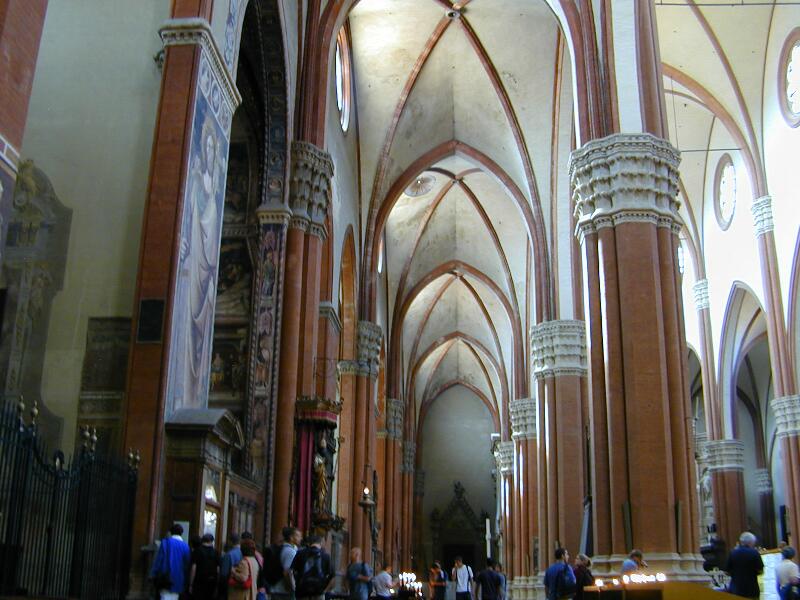
San Patronio Church, in Bologna, was chosen as an site for Meridiana
Line (Solar Meridian Observatory).
Danti built the first one in the 1570's. The line was refined
and rebuilt by Cassini in 1655, and was felt to be the finest
Astronomical Instrument in the Western world at that time. Besides
the obvious size of the church, it was unique in
its relative North-South Orientation. Cassini had to thread the
'true north' meridiana between two of the giant columns.
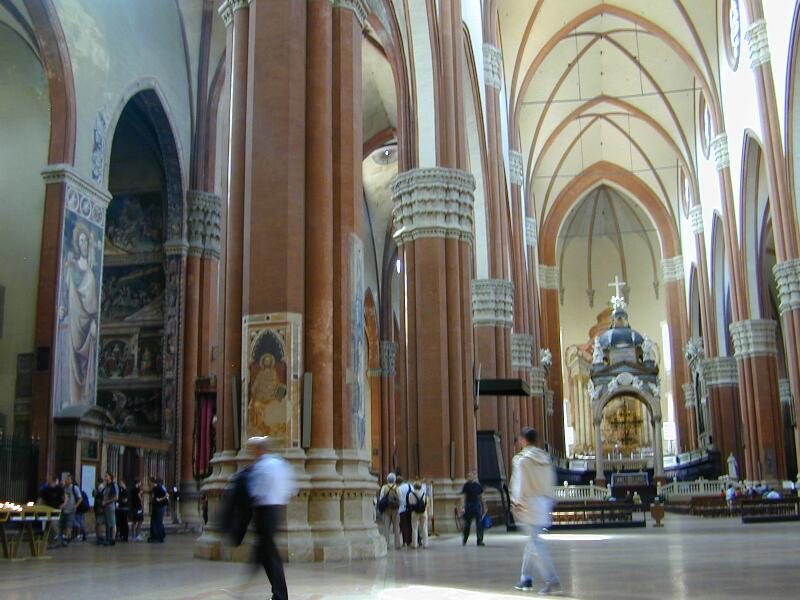
The gray haired man with the back-pack is standing directly on the line. The hole that Cassini punched through the roof is visible above his head.
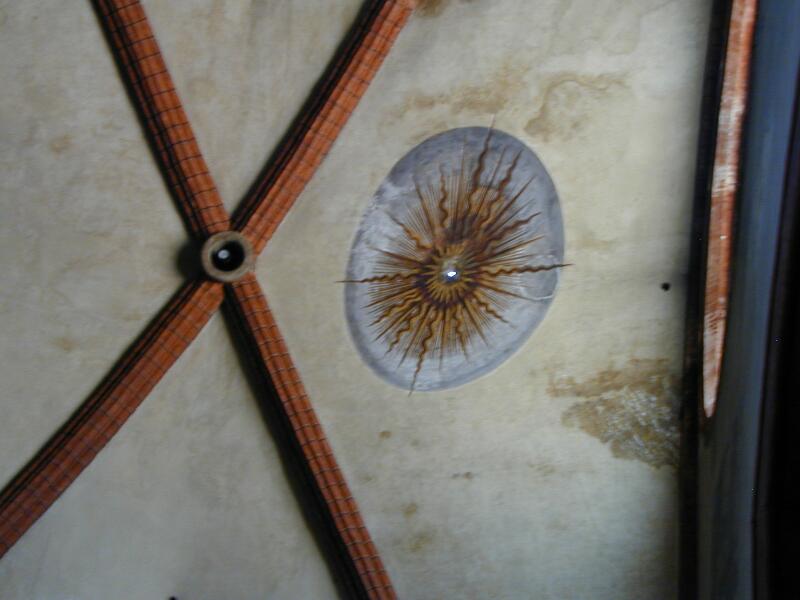
This is the pinhole for the observatory. We were able to image sunspots on the floor with it.
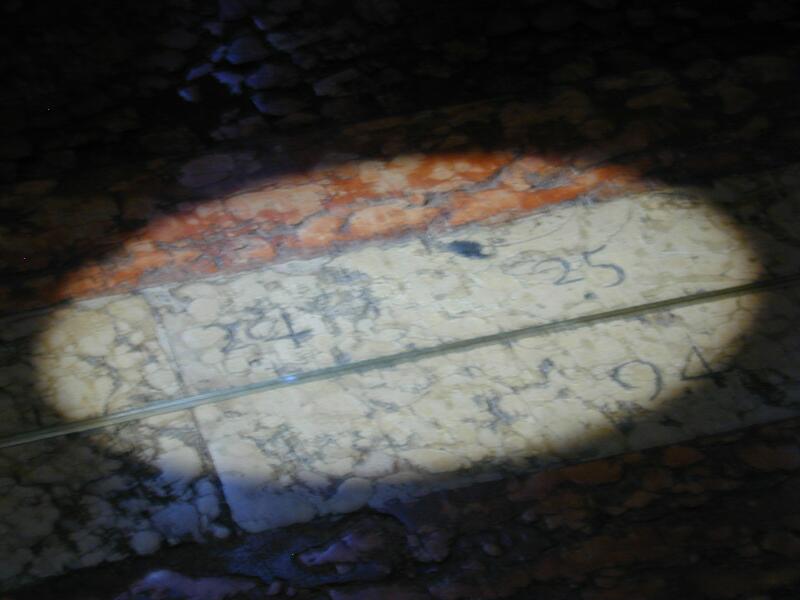
This solar image was about 18" across, a few days before the fall equinox.
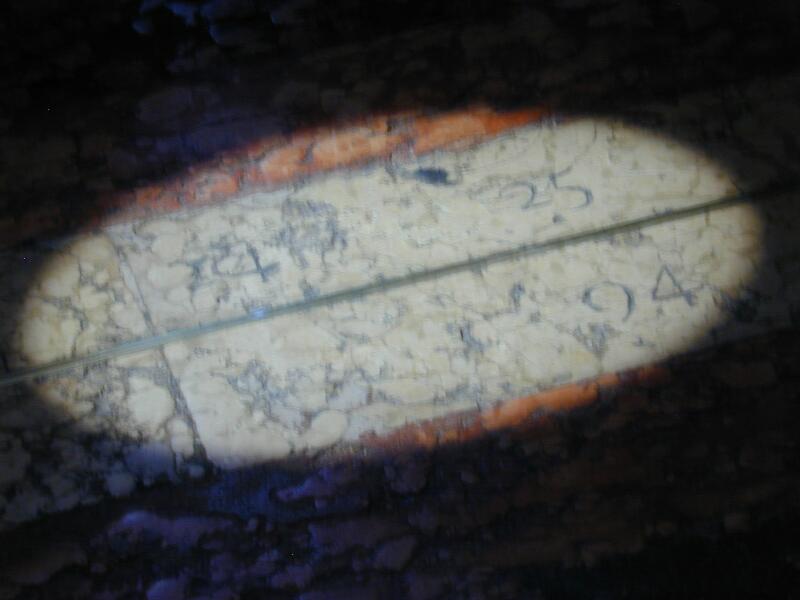
High solar noon.
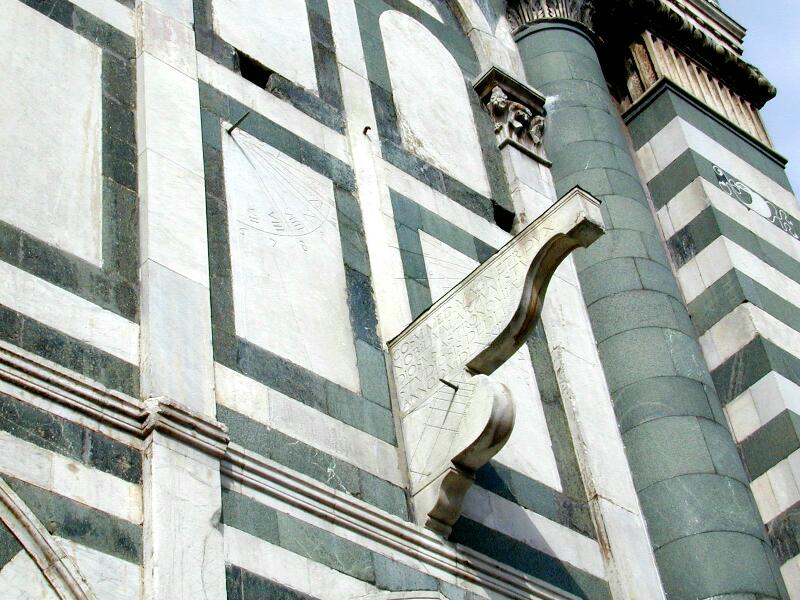
Danti built three instruments on the South Wall of the Santa Maria de Novella Church in Florence. The Quadrant's main purposes were to observe the equinox, obtain the length of the year, and to check the value of the tilt of the earth.
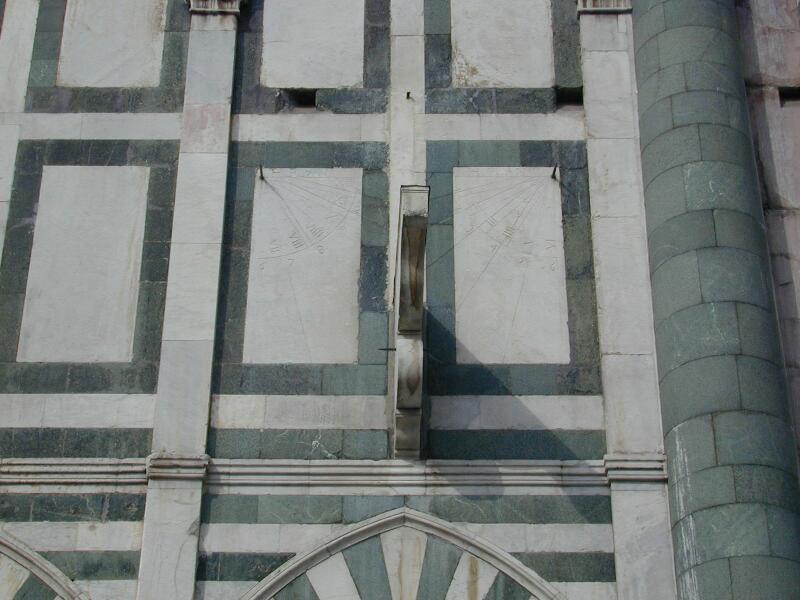
Another view of the Quadrant.
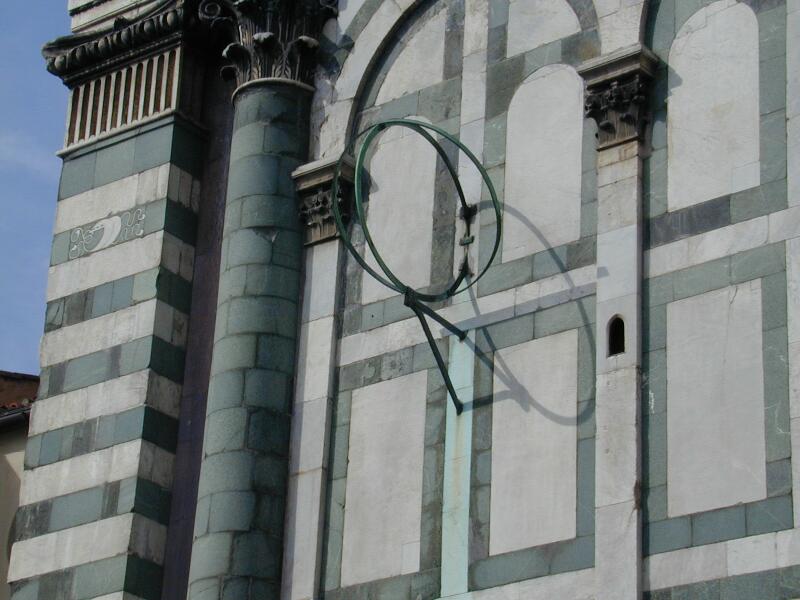
With this armillary sphere, Danti made accurate measurements of the exact length of the year. Along with principal astronomer Clavius, Danti was commissioned by Pope Gregory XIII to correct the calendar (Julian), and produced the Gregorian Calendar in 1582, subtracting ten 'leap back' days in the process. The Julian Calendar was based on a year of 365.25 days. The number decided upon by the astronomers of the late 16th century was 365.2422 days. February 29th leap days were henceforth omitted if they are divisible by 100, but re-instated if they were divisible by 400. For example in 2000, we had a leap year, but they didn't in 1900. This picture was taken on September 19th, so the 'horizontal' shadow is nearly exactly horizontal, as it will be at the equinox.
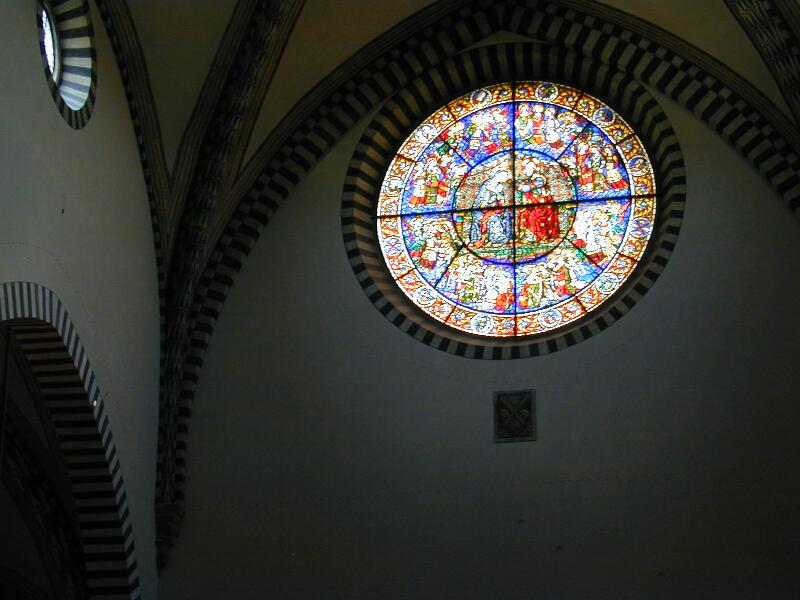
He also built a Meridiana Line inside (which doesn't survive).
The 'pinhole' in the stained glass is still present
and is imaging the sun on the striped arch to the left.
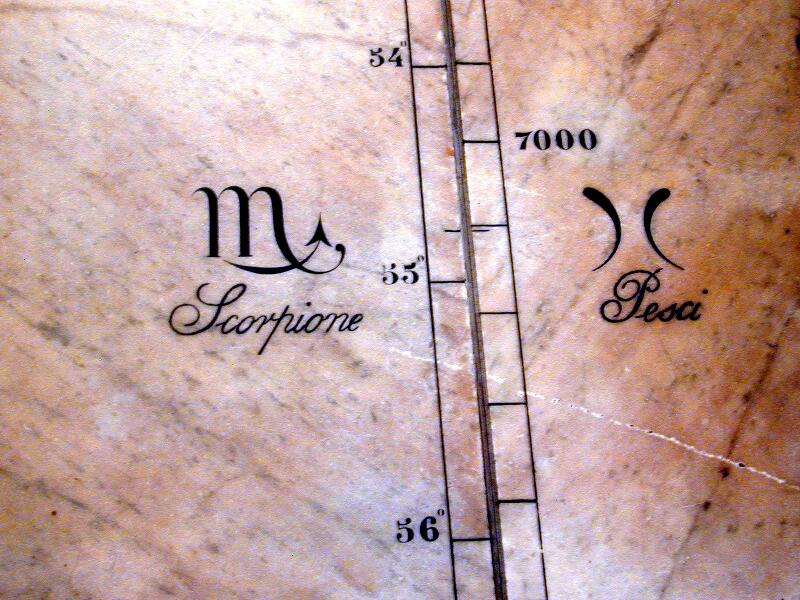
Siena couldn't be without it's Meridiana line. So it was built by Gabbrielli in 1691 in the meeting room of the Fisiocritici. An earthquake destroyed it totally in 1798, and Pianigiani rebuilt it in 1848.
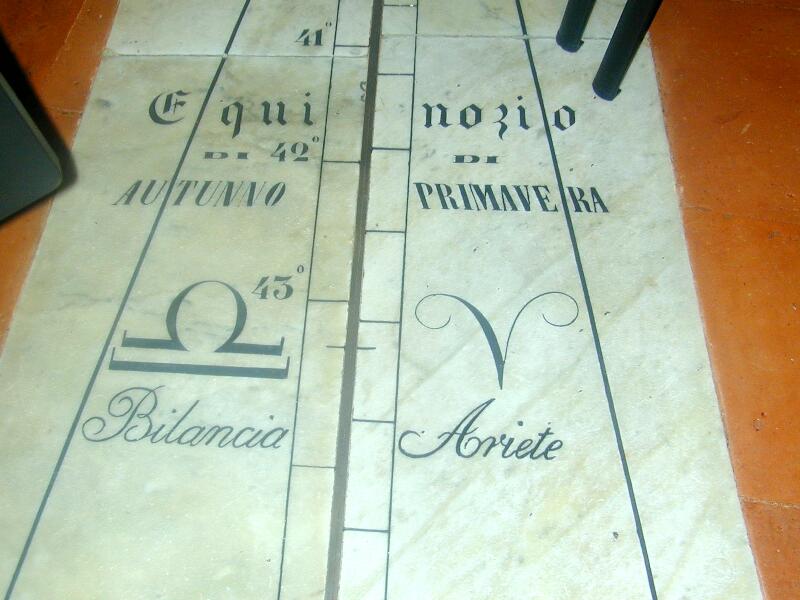
It featured an ante lemma correction line to adapt the solar time to
the newly adopted Mean Solar Day. The
'figure 8' adds or subtracts a different amount of time for each day
of the year. Unfortunately, the corrections were
backwards. These are pieces of marble that had to be removed and replaced
by the revised ones. "Anyone have a good eraser?" The error was really
not discovered until 1861, by the past president of the Academy.
The Fisiocritici had time to correct the error before the Congress of Scienziati
convened in Siena in 1862.
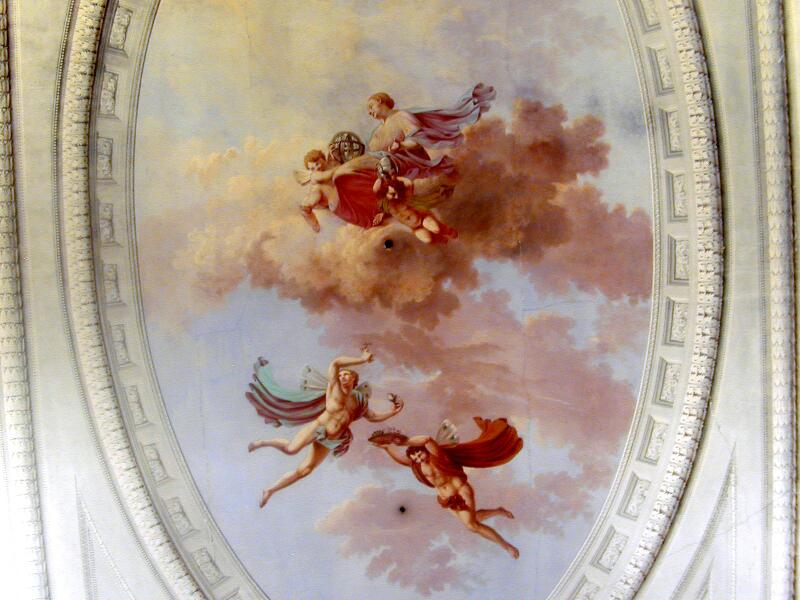
Note the astronomical instruments in the painting overhead.
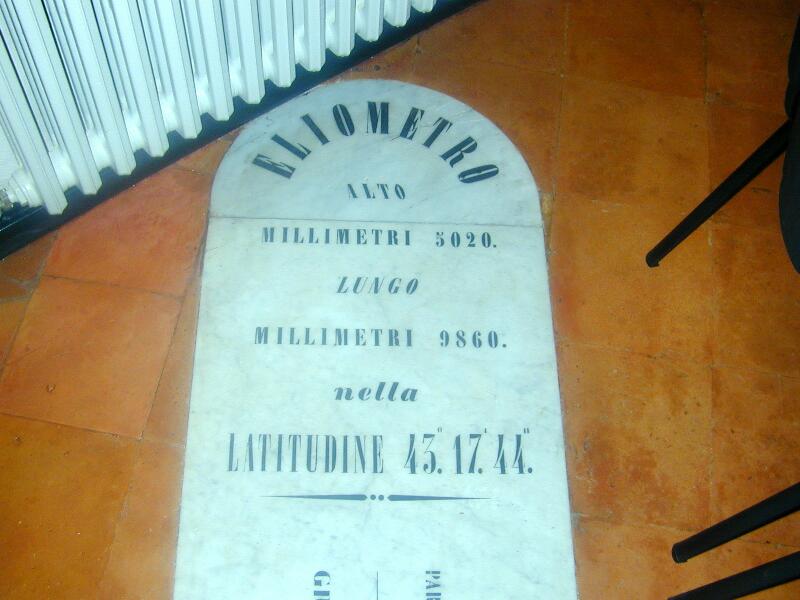
The north end of the line.
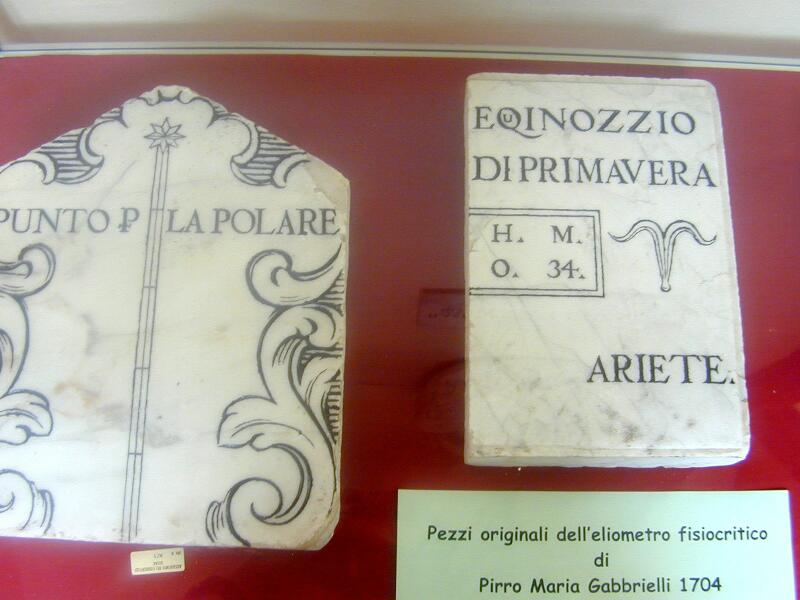
Pieces of the original 17th century line.
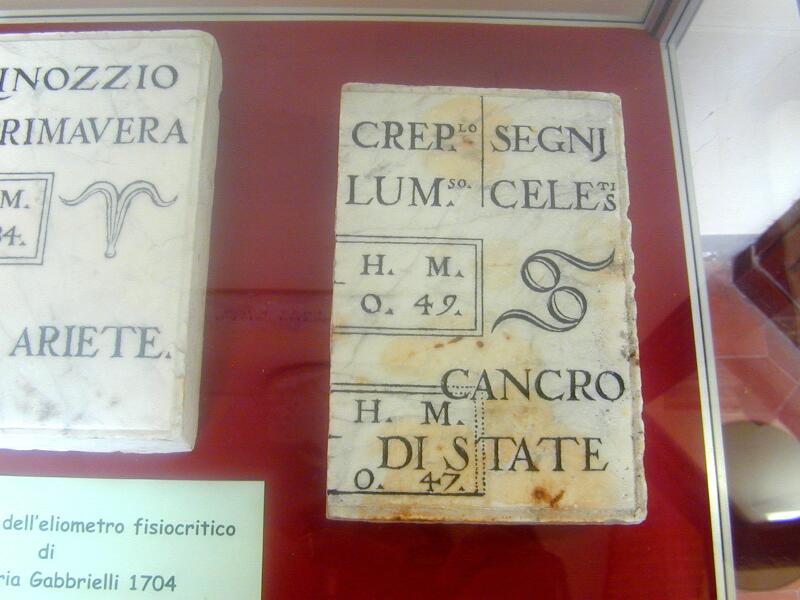
More of the old pieces.
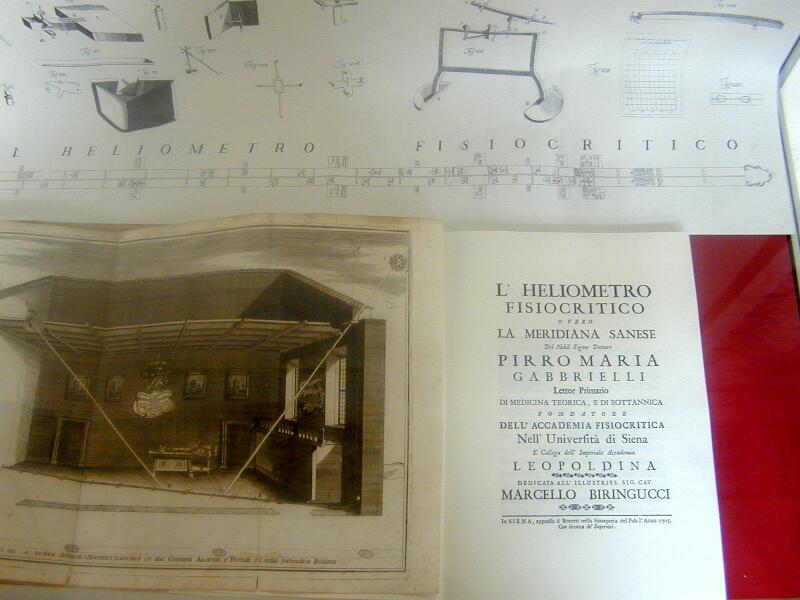
The original drawings.
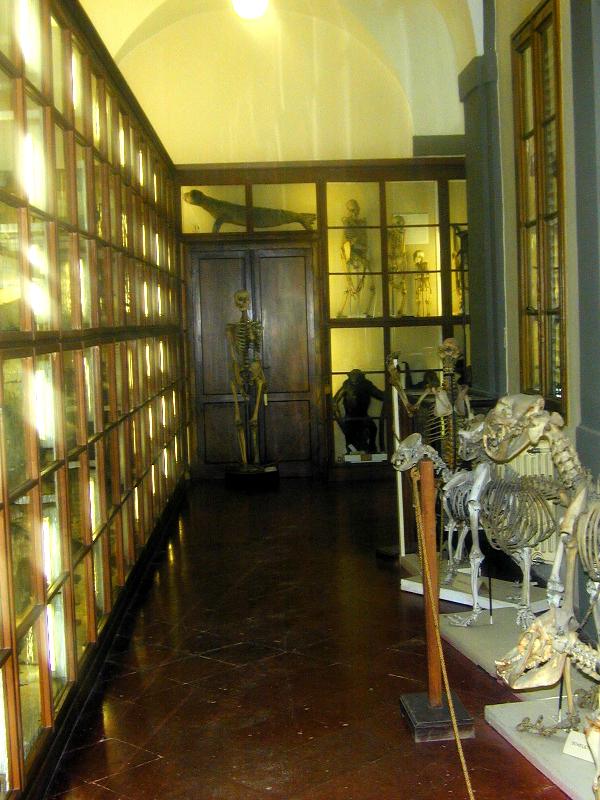
The Meridiana is still in the Fisiocritici meeting room. It is
a sort of obscure 'Natural History' museum.
It's one of the few free museums in Tuscany.